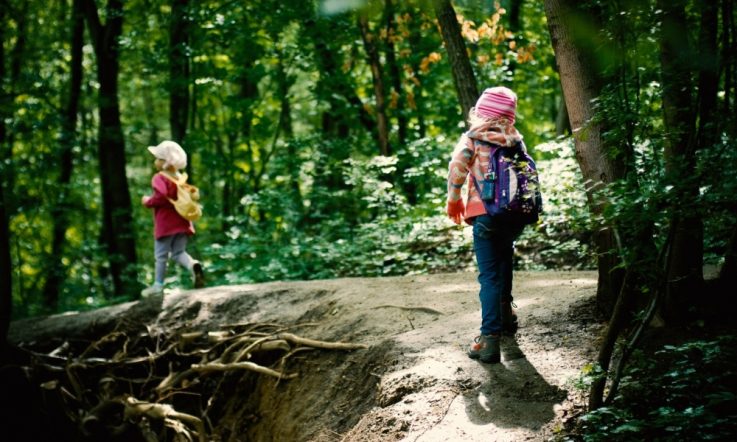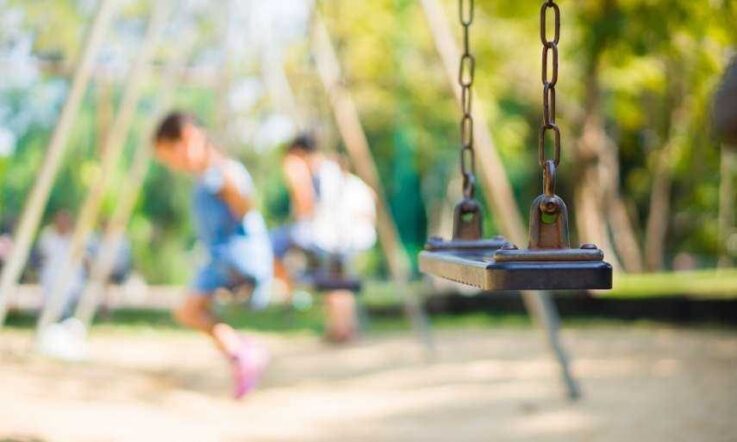In her new book Early Childhood Playgrounds: Planning an outside learning environment Prue Walsh provides a step-by-step guide to planning, designing and creating an outdoor learning environment for young children. In this extract for Teacher readers, Walsh explores the reasons why outside play is important for children with special needs.
One of the key areas of difficulty for children with special needs or specific learning difficulties is a delay in the connections between the neural pathways. Constant reinforcement of activities to stimulate these neural pathways is essential if a learner with special education needs or specific learning difficulties is to achieve his or her potential. The brain reacts to the environment as it learns from experience. A stimulating environment encourages network formation and ‘results in the improvement of the brain's ability to react, learn and memorise – its intelligence' (Portwood 2000).
For example, proprioception (the awareness of where our limbs are in space) affects many children with learning difficulties such as ADHD, dyspraxia and dyslexia. The sensitive receptors that react to the amount of contraction or stretch in our muscles undergo when moving inform our brain which records it in our memory system. This kinaesthetic mapping is an essential part of developing good gross motor skills, which in turn produce more sophisticated fine motor skills essential for learning, both in the classroom and generally in life skills. The vestibular system also provides us with information regarding the direction and speed of movement. It enables us to develop good muscle tone and balance. If the proprioceptive and vestibular systems do not function effectively a child will appear clumsy and uncoordinated – a feature prevalent in a child with dyspraxia.
The nature of physical play is directly related to the child's level of motor control. In most children this is an area of voluntary movement, but for those children with special needs this is not so clearly defined. Activities such as weaving in and out of obstacles, combining swift changes of movement and direction, following a sequence and keeping balance are an essential part of achieving fluidity of movement. Playground activities that incorporate the use of large muscle groups (coordination of arms, legs, head and trunk) leading to improvement in control of small muscles groups (balance in the feet or hands grasping, which is involved in large movements such as climbing) form part of a child's developmental milestones. Manipulative skills such as pouring take place through sand and water play; this is where loose items combine spatial judgement, movement control and clear separate roles for both hands. The use of each tool often requires practice for children with impaired motor control.
There is often conflict between child safety and development of these fine motor skills and supported practice may be required, particularly where a sequence of activities is required. A well-designed playground does much to support the teacher's role by facilitating one-to-one contact, observation and support. A playground that incorporates plenty of multisensory stimulation will improve the integration of skills such as spatial awareness, body image, interaction and self-esteem. Equally, it is important to include tranquil areas where a child who has difficulty in assimilating numerous activities has the opportunity for ‘down time'.
Above all children with special educational needs require more time to organise their thoughts, actions and responses. They may have devised strategies to avoid difficult tasks so it is important to show appreciation of the things that they are good at, while encouraging them to challenge their limitations – giving plenty of support and affirmation along the way. This is especially important in younger children where self-esteem seems to rely more on success than on doing the same activity as everyone else.
Children with special needs have a critical need and right to play as an essential means of maximising their potential. Integration, not segregation, is the need of most children with special needs. For most children this is best done when they are integrated into a well-planned and equipped children's centre playground. It allows them to be seen primarily as individuals in their own right and only secondarily as children with special needs.
The early childhood centre is often the first and only opportunity some of these children have of being fully integrated. If handled well, it will provide them with important insights and an expanded view of life. It may also help in part to prevent further deterioration of existing abilities and help them compensate for skills that are unlikely to be fully developed. For others whose special needs are less acute, it is an important stepping stone, the first opportunity towards integration and independence in life.
Outside play gives children with special needs an opportunity to be treated more like their more able peers. Indeed, Leland G Shaw (1987) observes that:
‘Well-designed playgrounds with ample space where planning has been carried out by informed parties with a deep understanding of children's play and development… are the most effective spaces for accommodating a markedly varied range of skills and needs that can occur within any group of children, let alone those with special needs.'
In outdoor play children with special needs can imitate, model behaviour on what they observe and, like other children, play on the periphery of groups before integrating with smaller and larger groups. Their level of development and type of special need will have a bearing on how fully they become involved. For many, peer group pressure will be an incentive, and it may also make them aware for the first time that they are different in some ways. This realisation can be part of an early process of growing acceptance. It need not be a negative experience, but rather one of reaching a reality that will help them move on to acquire skills to accommodate and handle their needs, social and otherwise.
It is not possible to meet all the play objectives and goals of children with special needs in an early childhood centre, but a wide range of the children can be, and are, integrated. It may take a child with severe cerebral palsy many months to learn, for example, to climb a low timber bridge – but this may well also signal a whole new level of independence and be a cause of celebration for everyone at the centre.
Children with different forms of Asperger's actively seek and needs settings that allow them to play alone, retreat and observe. Marked variations are exhibited with Asperger's depending on factors such as the form, severity, the level of early intervention, support, experience and continuity of the teacher and the acceptance, support and level of consistent loving handling.
It is also a learning experience for the other children: sometimes their questions, which may seem blunt to an adult, show an honest curiosity that will help them, often quickly and readily accept people with special needs, not only at this stage but throughout their lives.
References
Portwood, M. (2000) Understanding Developmental Dyspraxia: A Textbook for Students and Professionals, David Fulton Publishers: London.
Shaw, L. G. (1987) ‘Designing playgrounds for able and disabled children' in Weinstein and David 9eds) Spaces for Children: The Built Environment and Child Development, Plemum Press: New York & London
Walsh, P. (2016). Early childhood playgrounds: Planning an outside learning environment. Routledge.
When planning activities outdoors, do you consider how they may impact students with special needs? What things do you consider before getting started?
When playing outdoors, how do you ensure that children with special needs are integrated with other students?
Thinking about the playground equipment at your own school, does it include both opportunities for multisensory stimulation and a quiet area where children can have some ‘down time’?



